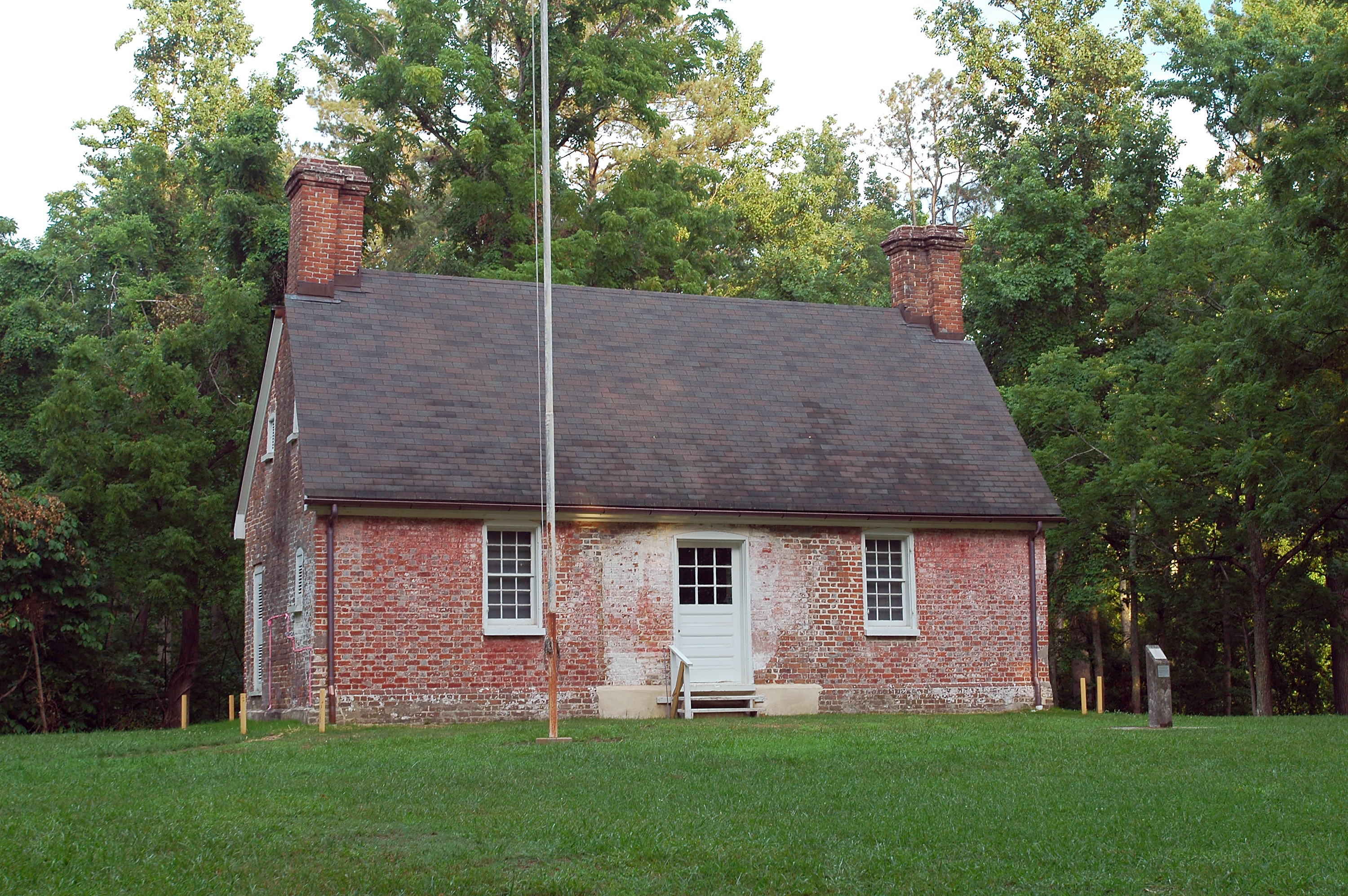Kiskiak House

The Kiskiak House is a remarkably preserved eighteenth-century plantation house located onboard Naval Weapons Station Yorktown. The name of the building comes from the Native American tribe that inhabited the weapons station's lands prior to the arrival of the Europeans.
Built in the 1720s, the Kiskiak House is one of the earliest Georgian houses in Virginia. This architectural style was popular throughout the eighteenth century. Georgian houses are distinguished by their symmetrical design featuring central doors on the back and front, connected by a central hallway. Two chimneys on each side of Georgian houses add to their symmetrical appearance. A 1915 fire gutted the interior of the building, and all that remains of the original structure are the four external brick walls and two chimneys. Because the Kiskiak House is such a rare and exquisite example of early Georgian architecture, it was listed in the National Register of Historic Places and the Virginia Landmarks Register in 1969.
York County records suggest that the Kiskiak House was constructed in the late 1720s, during Charles Hansford's ownership of the property. Much of the land where the Naval Weapons Station sits today, including the house's location, was owned by several members of the Hansford family since the 1650s. This included William Hansford's ancestor, John Hansford who purchased 650 acres of land around West's Creek (the seventeenth century name for Felgates Creek) in 1658. After John Hansford's death, his land remained in the Hansford family. In 1727, Charles Hansford purchased 100 acres of land at the headwaters of Felgates Creek, including where Kiskiak currently sits, from his brother William. Kiskiak was likely constructed after this time. The solidly built foundation suggests that Charles Hansford commissioned a professional architect to design it and utilized the skilled labor of enslaved people, who often learned trades including masonry. Kiskiak remained with the Hansford family until the mid-19th century.
In 1850, John H. Lee (who is not related to General Robert E. Lee), purchased the property. The Lee family resided there until 1862 when they, like many area residents, fled west to Richmond to escape the intensifying Civil War. After the war, the Lees remained in Richmond and used Kiskiak as a vacation home. The Lee family cemetery lies in the front yard of the house. In a wooded area, near the Lee family plot, is an unmarked cemetery for the enslaved people who lived and worked on the property. It most likely contains the remains of enslaved people from both the Hansford and Lee owners of the property. Kiskiak remained with the Lee family until the Navy acquired the property in 1918.
Archaeological excavations in the yard surrounding Kiskiak produced artifacts from the eighteenth through middle twentieth centuries. Archaeologists also uncovered brick foundation from a detached eighteenth century kitchen, the original builder's trench surrounding the house's foundation, and evidence of several other outbuildings dating to various phases of the structure's occupation.